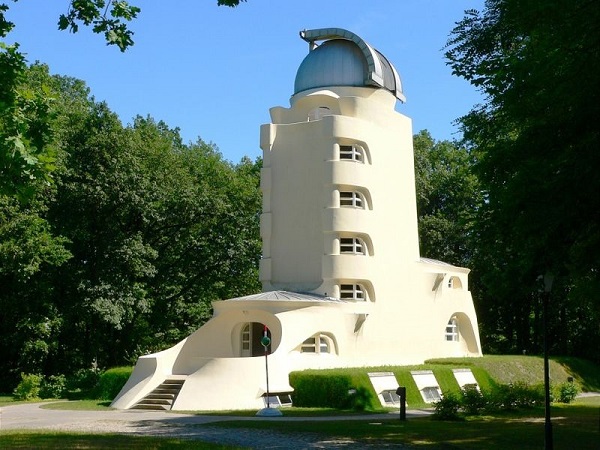Expressionist architecture
Expressionism emerged in Northern Europe in the early 20th century in poetry and painting, where it attempted to distort reality to express subjective, emotional experience. It quickly spread through all of the arts and architecture, pioneered by a group of architects from Germany, Austria and Denmark.
Expressionist architects used materials such as brick, concrete and glass to create novel sculptural forms and massing, sometimes distorted and fragmented to express an emotional perspective. Very often, expressionism involved a rejection of historical styles, symmetrical forms, and traditional designs, and instead embraced abstraction (based on structures not found or seen in the real world). This tended to result in unusual building forms using innovative construction techniques that stood out from their surroundings.
While the individualistic and informal approach to expressionist architecture makes it more difficult to define as a precise style, there are some recurring characteristics, including:
- Expressing emotion through distorted forms.
- Emphasis of symbolic or stylistic expression over realism.
- An attempt to achieve new and original designs.
- Natural themes such as mountains, lightning, rock formations, caves, and so on.
- Influence of Moorish, Egyptian, Indian and other eastern architectural styles.
- The romantic appreciation of architecture as an art form.
One of the landmark buildings of the expressionist form is the Einstein Tower by Erich Mendelsohn (see top image).
[edit] Related articles on Designing Buildings Wiki
Featured articles and news
Moisture, fire safety and emerging trends in living walls
How wet is your wall?
Current policy explained and newly published consultation by the UK and Welsh Governments.
British architecture 1919–39. Book review.
Conservation of listed prefabs in Moseley.
Energy industry calls for urgent reform.
Heritage staff wellbeing at work survey.
A five minute introduction.
50th Golden anniversary ECA Edmundson apprentice award
Showcasing the very best electrotechnical and engineering services for half a century.
Welsh government consults on HRBs and reg changes
Seeking feedback on a new regulatory regime and a broad range of issues.
CIOB Client Guide (2nd edition) March 2025
Free download covering statutory dutyholder roles under the Building Safety Act and much more.
AI and automation in 3D modelling and spatial design
Can almost half of design development tasks be automated?
Minister quizzed, as responsibility transfers to MHCLG and BSR publishes new building control guidance.
UK environmental regulations reform 2025
Amid wider new approaches to ensure regulators and regulation support growth.
The maintenance challenge of tenements.
BSRIA Statutory Compliance Inspection Checklist
BG80/2025 now significantly updated to include requirements related to important changes in legislation.
Shortlist for the 2025 Roofscape Design Awards
Talent and innovation showcase announcement from the trussed rafter industry.























